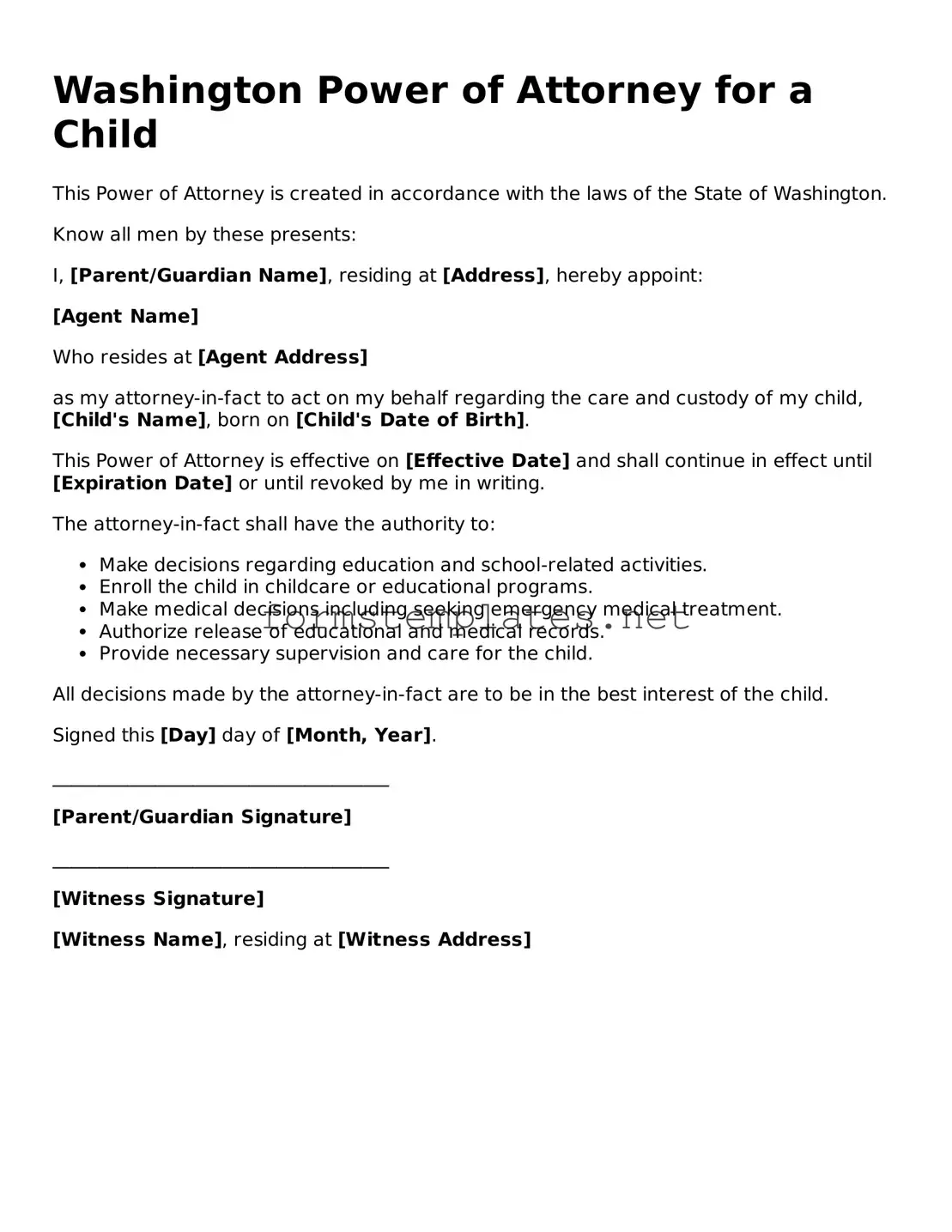Washington Power of Attorney for a Child
This Power of Attorney is created in accordance with the laws of the State of Washington.
Know all men by these presents:
I, [Parent/Guardian Name], residing at [Address], hereby appoint:
[Agent Name]
Who resides at [Agent Address]
as my attorney-in-fact to act on my behalf regarding the care and custody of my child, [Child's Name], born on [Child's Date of Birth].
This Power of Attorney is effective on [Effective Date] and shall continue in effect until [Expiration Date] or until revoked by me in writing.
The attorney-in-fact shall have the authority to:
- Make decisions regarding education and school-related activities.
- Enroll the child in childcare or educational programs.
- Make medical decisions including seeking emergency medical treatment.
- Authorize release of educational and medical records.
- Provide necessary supervision and care for the child.
All decisions made by the attorney-in-fact are to be in the best interest of the child.
Signed this [Day] day of [Month, Year].
____________________________________
[Parent/Guardian Signature]
____________________________________
[Witness Signature]
[Witness Name], residing at [Witness Address]
